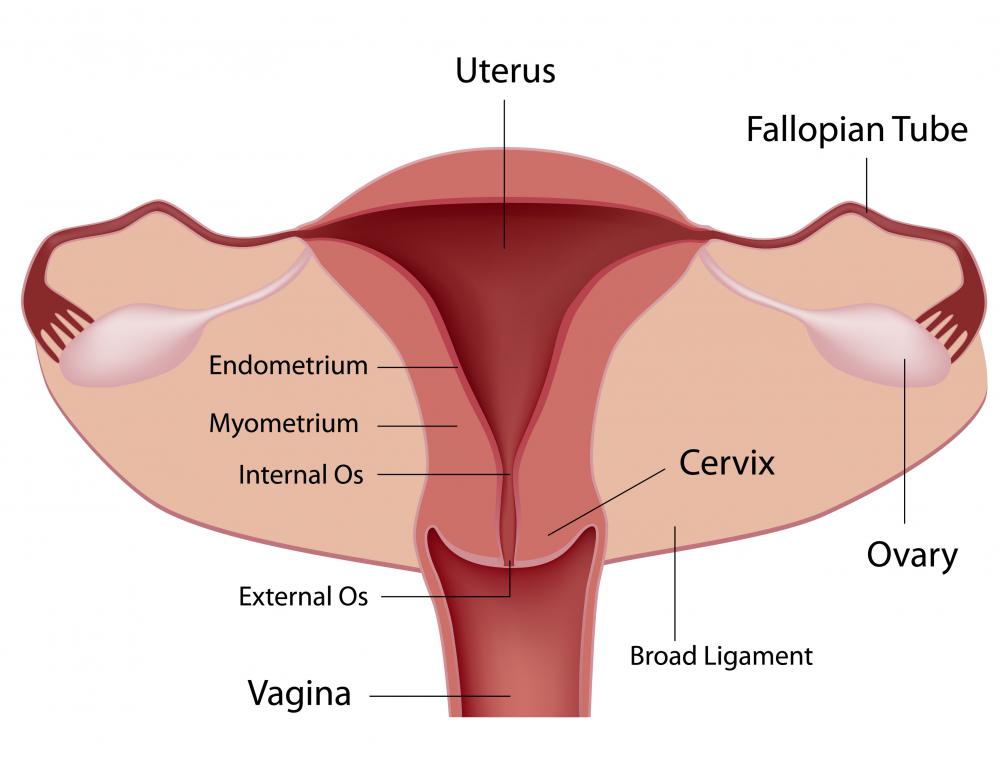At WiseGEEK, we're committed to delivering accurate, trustworthy information. Our expert-authored content is rigorously fact-checked and sourced from credible authorities. Discover how we uphold the highest standards in providing you with reliable knowledge.
What Is the Connection between the Ovaries and Fallopian Tubes?
The ovaries and fallopian tubes are both part of the female reproductive tract. There are a number of other connections between these two structures, including their physical proximity and the fact that both play important roles in promoting fertility. The two structures can also be linked in various pathologic conditions. Pelvic infections could affect both the ovaries and fallopian tubes, as could conditions such as endometriosis or fibroids. Additionally, abnormalities in the function of either of these parts of the reproductive tract could result in infertility.
One of the important connections between the ovaries and the fallopian tubes is that they are located adjacent to one another in the pelvic region of women. Normal women have two fallopian tubes and two ovaries. The two fallopian tubes extend from the superior surface of the uterus, and both extend laterally in opposite directions. At the end of the fallopian tubes, the cylindrical structures increase in diameter and extend into the fimbriae, which are finger-shaped protuberances that cradle the ovaries. The ends of the fallopian tubes are open, allowing eggs that erupt from the ovaries to travel to the internal aspect of the uterus.

Another link between the ovaries and fallopian tubes is that they both function to facilitate reproduction. The ovaries are the structures in which eggs are stored. With each monthly menstrual cycle, one of these eggs develops into maturity, and at ovulation erupts from the ovary and into the mouth of the fallopian tube. Over the course of a few days, the mature egg travels through the fallopian tube, and if any sperm have traveled up through the reproductive tract, is fertilized. The fertilized egg then continues its travels through the fallopian tube and implants into the internal wall of the uterus.

Both the ovaries and fallopian tubes can be affected by some of the same pathologic conditions. Often both parts of the female anatomy can be infected in the case of pelvic inflammatory disease (PID). When this occurs, bacteria travel from the vagina, through the cervix, into the uterus, and through the fallopian tubes. Occasionally the bacteria can cause a tubo-ovarian abscess (TOA), which is an inflammation of both the fallopian tubes and ovaries that results in an infected mass that can be visualized on various imaging studies. This infection can be life-threatening in the short term, and cause problems with fertility in the long term.

A variety of other pathologic conditions could affect both the ovaries and fallopian tubes. Endometriosis, which is a condition where uterine tissue grows outside of the uterus, can affect both of these anatomic structures. Often this condition can cause severe pain as well as problems with fertility. Fibroids, which are benign growths of the uterine muscle, can grow so large as to compress the tubes and the ovaries, inhibiting their normal function.
AS FEATURED ON:
AS FEATURED ON:















Discuss this Article
Post your comments